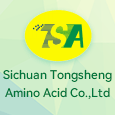Products Categories
| CAS No.: | 328-38-1 |
|---|---|
| Name: | D-2-Amino-4-methylpentanoic acid |
| Article Data: | 115 |
| Molecular Structure: | |
|
|
|
| Formula: | C6H13NO2 |
| Molecular Weight: | 131.175 |
| Synonyms: | (R)-(-)-Leucine;(R)-Leucine;D-2-Amino-4-methylvaleric acid;Leucine,d;D-Leuzin;Leucine, D-;(2R)-2-amino-4-methylpentanoic acid;H-D-Leu-OH;D-2-Amino-4-methylpentanoic acid; |
| EINECS: | 206-327-7 |
| Density: | 1.035 g/cm3 |
| Melting Point: | 300 ºC |
| Boiling Point: | 225.8 ºC at 760 mmHg |
| Flash Point: | 90.3 ºC |
| Solubility: | 24 g/L (25 ºC) |
| Appearance: | white crystals |
| Hazard Symbols: |
 Xi Xi
|
| Risk Codes: | 36/37/38 |
| Safety: | 22-24/25-36-26 |
| PSA: | 63.32000 |
| LogP: | 1.14470 |
- 483366-12-7(2S,4R)-1-Boc-2-cyano-4-hydroxypyrrolidine
- 361456-36-2METHYL (R)-(+)-ISOCYANATO-3-PHENYLPROPI&
- 5156-58-1N-(1-Benzyl-4-pipperidinyl)-N-phenylpropanamide HCl
- 81281-59-67-Benzylideneaminotheophylline
- 50288-62-5threo-Phenyl-2-piperidyl acetamide
- 82993-81-5D-threo-Ritalinic acid hydrochloride
- 47087-37-6Z-D-Glu-OMe
- 73441-42-6METHYL-5-CHLORO-2,2-DIMETHYLVALERATE
- 68439-39-4Poly(oxy-1,2-ethanediyl), alpha-(2-ethylhexyl)-omega-hydroxy-,
- 852475-26-4MC1568
- 35661-60-0, 126727-03-5, 114360-54-2
N-(9-fluorenylmethoxycarbonyl)-D-leucine

- 328-38-1
(R)-leucine

| Conditions | Yield |
|---|---|
| With piperidine In N,N-dimethyl-formamide at 20℃; | 100% |
- 89384-51-0
(R)-N-benzylleucine

- 328-38-1
(R)-leucine

| Conditions | Yield |
|---|---|
| With hydrogen; palladium on activated charcoal In acetic acid for 24h; | 98% |
- 126191-08-0
(R)-2-azido-4-methylpentanoic acid

- 328-38-1
(R)-leucine

| Conditions | Yield |
|---|---|
| With hydrogen; palladium on activated charcoal In water; acetic acid under 760 Torr; for 4h; | 92% |
- 24292-07-7
D-α-Hydrazino-isocapronsaeure

- 328-38-1
(R)-leucine

| Conditions | Yield |
|---|---|
| With hydrogen; platinum(IV) oxide | 91% |
- 170642-24-7
(R)-2-Amino-4-methyl-pentanoic acid ((1S,2S)-2-hydroxy-1-methyl-2-phenyl-ethyl)-methyl-amide

A
- 328-38-1
(R)-leucine

B
- 90-82-4
pseudoephedrine

| Conditions | Yield |
|---|---|
| With water for 10h; Heating; | A 86% B n/a |
- 170642-24-7
(R)-2-Amino-4-methyl-pentanoic acid ((1S,2S)-2-hydroxy-1-methyl-2-phenyl-ethyl)-methyl-amide

- 328-38-1
(R)-leucine

| Conditions | Yield |
|---|---|
| In water for 10h; Heating; other reagent; | 86% |

| Conditions | Yield |
|---|---|
| With D-glucose; Bacillus subtilis glucose dehydrogenase; Symbiobacterium thermophilum meso-Diaminopimelate dehydrogenase W121L/H227I mutant; NADP; ammonium chloride In aq. buffer at 37℃; for 24h; pH=8.5; Kinetics; Reagent/catalyst; Enzymatic reaction; | 68% |
| With D-Alanine; meso-diaminopimelate dehydrogenase; pyridoxal 5'-phosphate; alcohol dehydrogenases from Bacillus stearothermophilus; alcohol dehydrogenases from Thermoanaerobacter brockii; NADH In isopropyl alcohol at 35℃; for 12h; pH=8; Reagent/catalyst; Enzymatic reaction; enantioselective reaction; | 53.2% |
| With meso-2,6-D-diaminopimelic acid dehydrogenase mutant BC621; ammonium chloride; NADPH In various solvent(s) for 24h; | |
| With D-amino acid transaminase; D-Alanine; R-selective ω-transaminase from Arthrobacter sp; (3-hydroxy-5-hydroxymethyl)-2-methylisonicotinic acid 5-phosphate; isopropylamine In aq. phosphate buffer for 7h; pH=7; | n/a |
| With D-Glucose; Bacillus megaterium glucose dehydrogenase; ammonia; Symbiobacterium thermophilum mesodiaminopimelate dehydrogenase Enzymatic reaction; | n/a |

| Conditions | Yield |
|---|---|
| With zinc(II) perchlorate; (S)-15-amino-methyl-14-hydroxy-5,5-dimethyl-2,8-dithia<9>(2,5)pyridinophane In methanol for 24h; Ambient temperature; | 66% |

| Conditions | Yield |
|---|---|
| With yeast; Sucrose | |
| beim Durchgang durch den Organismus des Kaninchens; | |
| With penicillium glaucum |

| Conditions | Yield |
|---|---|
| With (-)-(R,R)-dibenzoyltartaric acid |

What can I do for you?
Get Best Price
Consensus Reports
Reported in EPA TSCA Inventory.
Specification
The D-Leucine, with the cas register number 328-38-1, has its IUPAC name of 2-amino-4-methylpentanoic acid. This is a kind of flaky crystalline powder, and soluble in water, acetic acid, slightly soluble in ethanol, and insoluble in diethyl [ethyl] ether. The product categories are including leucine [leu, l]; amino acids and derivatives; alpha-amino acids; amino acids; biochemistry; amino acids. It should be kept in the storage temp. -15°C. Besides, it is usually applied in biochemical study.
The physical properties of this chemical could be summarized as: (1)ACD/LogP: 0.73; (2)# of Rule of 5 Violations: 0; (3)ACD/BCF (pH 5.5): 1; (4)ACD/BCF (pH 7.4): 1; (5)ACD/KOC (pH 5.5): 1; (6)ACD/KOC (pH 7.4): 1; (7)#H bond acceptors: 3; (8)#H bond donors: 3; (9)#Freely Rotating Bonds: 4; (10)Polar Surface Area: 29.54; (11)Index of Refraction: 1.462; (12)Molar Refractivity: 34.86 cm3; (13)Molar Volume: 126.6 cm3; (14)Polarizability: 13.82 ×10-24 cm3; (15)Surface Tension: 39 dyne/cm; (16)Density: 1.035 g/cm3; (17)Flash Point: 90.3 °C; (18)Enthalpy of Vaporization: 50.93 kJ/mol; (19)Boiling Point: 225.8 °C at 760 mmHg; (20)Vapour Pressure: 0.0309 mmHg at 25°C.
As to its production method, please follow the below ways. Firstly, prepare the raw material of acetyl-DL-leucine, and go through the acylase treatment to remove L-leucine, and then hydrolyze in hydrochloric [chlorhydric] acid to get the crude products; Lastly, have the crystalline purification to get the puregrade.
When you are using this chemical, you should be very cautious. Being a kind of irritant chemical, it is irritating to eyes, respiratory system and skin, and may cause inflammation to the skin or other mucous membranes. So while dealing with this chemical, you should take the following instructions. Wear suitable protective clothing. Do not breathe dust and avoid contacting with skin and eyes. And if in case of contacting with eyes, rinse immediately with plenty of water and seek medical advice. You could also refer to WGK Germany 3 to obtain more safety information.
Additionally, you could convert the following datas information into the molecular structure:
(1)Canonical SMILES: CC(C)CC(C(=O)O)N
(2)InChI: InChI=1S/C6H13NO2/c1-4(2)3-5(7)6(8)9/h4-5H,3,7H2,1-2H3,(H,8,9)
(3)InChIKey: ROHFNLRQFUQHCH-UHFFFAOYSA-N
Below are the toxcity information of this chemical:
| Organism | Test Type | Route | Reported Dose (Normalized Dose) | Effect | Source |
|---|---|---|---|---|---|
| rat | LD50 | intraperitoneal | 6429mg/kg (6429mg/kg) | BEHAVIORAL: ALTERED SLEEP TIME (INCLUDING CHANGE IN RIGHTING REFLEX) LUNGS, THORAX, OR RESPIRATION: DYSPNEA | Archives of Biochemistry and Biophysics. Vol. 64, Pg. 319, 1956.
|
-
Premium Related Products

